All Departments
- Aortic valve stenosis (Aortic stenosis)
- arteriovenous malformations
- Avascular Necrosis
- Best cosmetic dentistry in Iran| Dental Treatment in Iran
- Breast Augmentation in Iran|Breast implant in iran
- Breast Reduction surgery
- Cancer in Iran: oncology in Iran
- Cardiology
- Cataract surgery in Iran
- Cochlear Implant Surgery in Iran
- Cosmetic Laser
- Cosmetic Surgery
- Ear cosmetic surgery
- Eye Care
- Eyelid surgery (Blepharoplasty)
- General Heart Surgery in Iran
- General surgery in Iran
- Glaucoma Treatment In Iran
- Hair Transplant
- Heart valve surgery
- lasik Eye Surgery
- Liposuction
- Non-Surgical Cosmetic procedures in iran
- Organ Transplantation in Iran
- Orthopedic
- Paget disease of bone
- Pediatrics
- Plastic surgery
- Psychiatry
- Radiology
- Rhinoplasty surgery in iran
- Shoulder Replacement Surgery
- SkinCare Treatment
- Spinal cord injury
- urolithiasis procedure in iran
- Urology
- Varicocelectomy
Opening Hours

Eye Care


Choosing Iran for eye care can be an attractive option due to its combination of quality medical services, cost-effectiveness, advanced eye surgery techniques, multilingual services for international patients, tourism opportunities, a dedicated medical tourism infrastructure, and a strong reputation in the field of eye care. Eye care in Iran benefits from these advantages, making it a compelling choice for individuals seeking high-quality and affordable ophthalmological treatments.
Eye care in Iran
Eye care in Iran is a comprehensive approach to maintaining and enhancing eye health, encompassing regular examinations with optometrists or ophthalmologists to detect vision issues and eye diseases early, prescribing corrective eyewear like glasses or contact lenses, protecting the eyes from injury with appropriate safety measures, and offering treatments and surgeries for conditions such as cataracts and glaucoma. Additionally, it emphasizes pediatric eye care for children’s visual development, managing conditions like dry eye syndrome, promoting lifestyle choices that support eye health, and providing vision correction options like LASIK surgery for those seeking permanent solutions to refractive errors, collectively ensuring the optimal well-being of one’s eyes. Iran’s healthcare system has made significant strides in eye care, making it an attractive destination for those seeking quality services in this field.
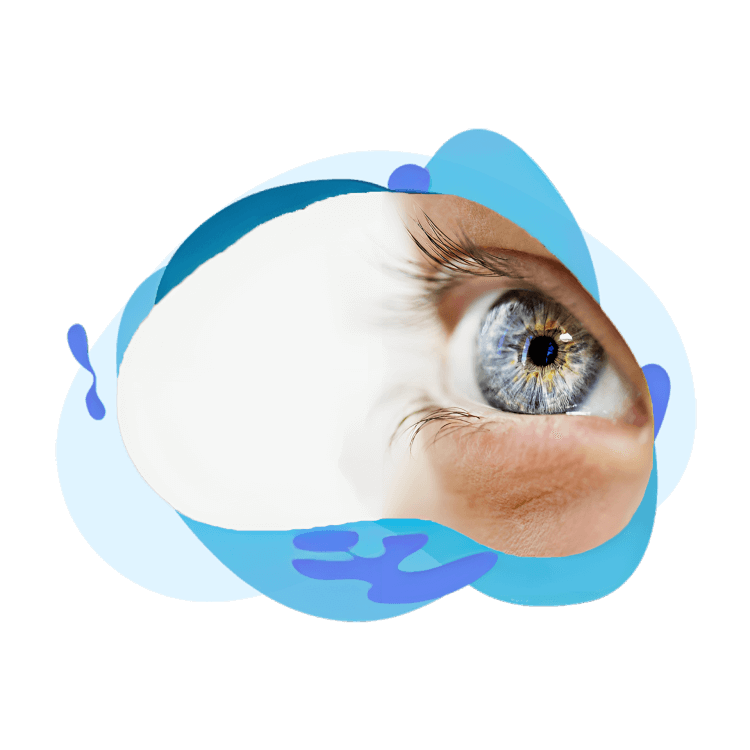

Ipdtourism is your trusted partner for all your eye care treatment needs in Iran. Our dedicated team specializes in providing comprehensive and hassle-free solutions for international patients seeking top-quality eye care procedures. From the moment you decide to embark on your eye care journey to the successful completion of the treatment, Ipdtourism takes care of every detail.
Eye care encompasses practices and medical services to maintain and enhance eye health, including regular examinations, corrective eyewear, injury prevention, and treatments for eye conditions. It aims to detect issues early, correct vision problems, protect eyes, and manage or cure eye diseases. Preventive measures and lifestyle choices also play a crucial role in promoting eye health, making eye care vital for overall well-being.
advanced eye care:
Advanced eye care refers to specialized medical services and treatments that go beyond standard eye exams and basic vision correction. These services may include specialized diagnostic testing, advanced surgical procedures, and treatments for complex eye diseases and conditions. Examples of advanced eye care services include:
a procedure that involves removing the cloudy lens in the eye and replacing it with an artificial lens.
a procedure that uses a laser to reshape the cornea and correct refractive errors such as nearsightedness, farsightedness, and astigmatism.
a variety of treatments are available to manage glaucoma, a condition that damages the optic nerve and can lead to vision loss.
procedures that are used to treat conditions that affect the retina, such as macular degeneration, diabetic retinopathy, and retinal detachment.
diagnosis and treatment of eye tumors, including cancerous and non-cancerous growths.
treatment of vision problems related to the nervous system, such as optic nerve disorders and vision loss caused by brain tumors.
a procedure that replaces a damaged or diseased cornea with a healthy one from a donor.
Lazy eye, medically known as amblyopia, is a childhood vision disorder characterized by reduced vision in one eye due to abnormal visual development.
Read More: Rhinoplasty Surgery In Iran
Read More: Revision Rhinoplasty In Iran 2023 | Best Surgeons And Low Cost
Read More: What Is The Best Nose Shape?
Read More: Upturned Nose Surgery In Iran
Advanced eye care center
Eye care in Iran is exemplified by the presence of advanced eye care centers equipped with cutting-edge technology and staffed by highly trained professionals. These centers offer a wide range of services, from routine eye examinations to sophisticated treatments and surgeries for various eye conditions and refractive errors. The country’s commitment to healthcare infrastructure development has led to the establishment of specialized eye care facilities that cater to both local and international patients, ensuring the highest standards of care and treatment. Additionally, Iran’s competitive pricing, skilled medical personnel, and emphasis on medical tourism make it an increasingly popular destination for those seeking top-quality eye care services in a modern and welcoming healthcare environment.
Many factors affect the weakening of the eye and the loss of vision of the eye, disorders and injuries related to the eye for various reasons may occur in sensitive areas of the eye and around it that must be carefully protected.
In the last two decades, eye surgeries have increased due to the use of very advanced techniques that have spread in Iran, such as the use of laser therapies, as well as the presence of capable and professional Iranian specialists. The eye is a very fragile organ and needs intensive care before, during and after surgery to minimize or prevent further damage. A specialist eye surgeon is responsible for selecting the most appropriate surgical procedure for the patient and taking the necessary precautions. Today, different types of eye surgery are widely performed in Iran, which has led to the development of various techniques for the treatment of eye problems.
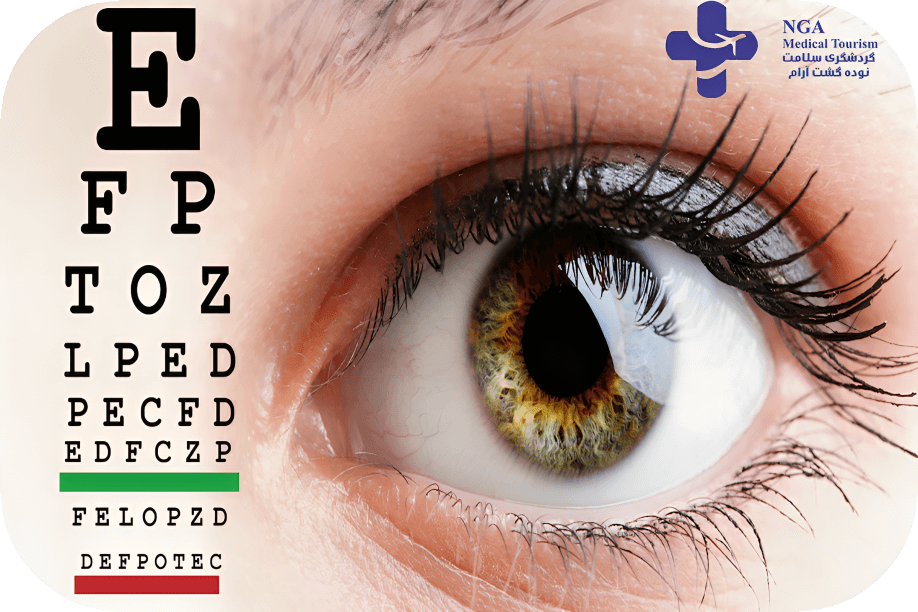
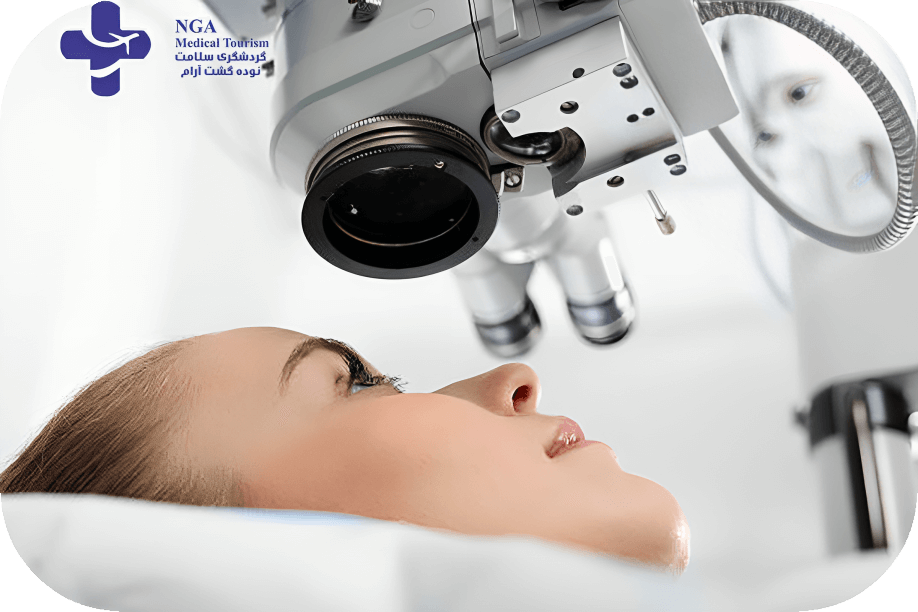
Errors can occur as a result of the length of the eyeball, corneal deformity, or normal lens aging, which can be marked by a change in the shape of the eye, a lens thicker or thinner than usual, and the pupil too small or too large.
To create normal vision, the cornea (the transparent tissue that covers the iris in front of the eye) and the lens of the eye must pick up light waves and collect them on the retina to send the image of the object to the brain through the optic nerve. When you look at an object, the light rays it reflects through the clearest and outermost layer of the eye – called the cornea – to the natural lens of the eye. The lens then focuses light on the retina. The retina is the innermost and deepest layer of the eye and contains the cells that receive light and the nerves involved in the eye. This layer is very sensitive to light and actually converts light patterns into electrical signals and transmits these signals to the brain through the optic nerve. Send. In the brain, these signals are known as images of the objects you see around you.
Refractive errors, such as nearsightedness (myopia), farsightedness (hyperopia), and astigmatism, can be improved through various methods. The most common approach is the prescription of corrective eyewear, including glasses or contact lenses, which helps to focus light properly on the retina. Refractive surgeries like LASIK (Laser-Assisted In Situ Keratomileusis) can reshape the cornea to correct these errors permanently, reducing or eliminating the need for glasses or contacts. Orthokeratology involves wearing special contact lenses overnight to reshape the cornea temporarily. Regular eye exams are essential for monitoring changes in refractive errors and adjusting prescriptions accordingly. Lifestyle choices, such as minimizing screen time and taking breaks, can also help alleviate eye strain associated with refractive errors.
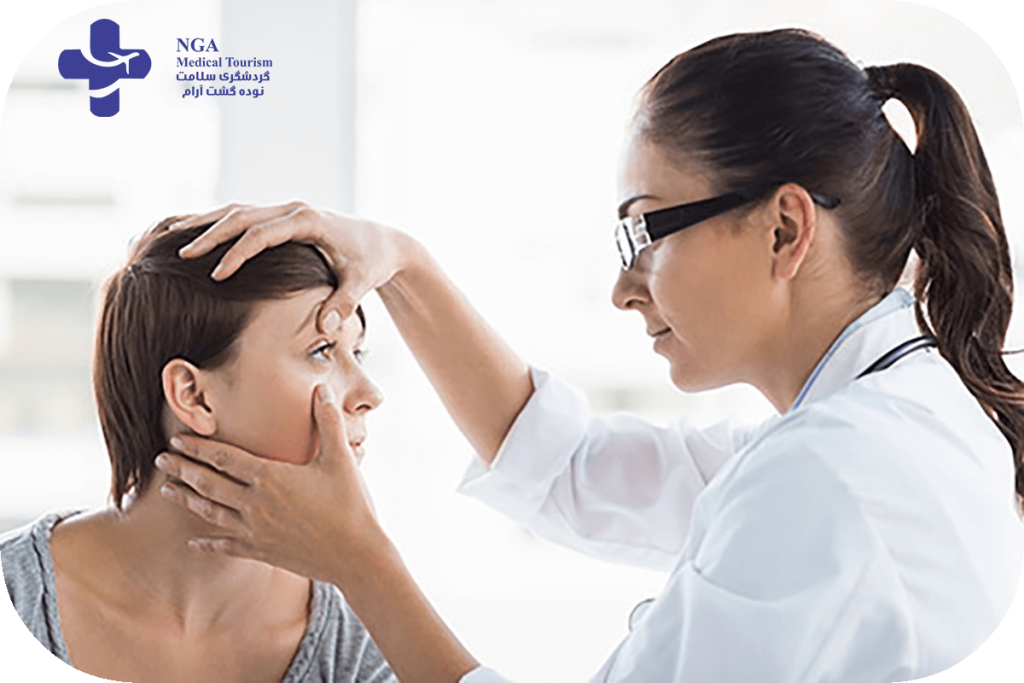

Diagnose and Treatments for Refractive Errors in Iran
Advancements in optical evaluation systems, laser technology, and intraocular lenses have expanded the scope of refractive surgery in Iran, resulting in higher quality and improved eye health. Common refractive errors like myopia, hyperopia, astigmatism, and presbyopia, typically emerging between ages 40 to 50, can often be corrected with glasses, contact lenses, or surgical procedures. Most eye correction surgeries focus on altering the cornea’s shape and curvature to ensure that light is properly directed onto the retina. Given the wide range of refractive issues, individualized diagnosis and treatment methods are necessary. Nodeh Gasht Aram’s global healthcare team can assist in diagnosing and treating these eye conditions, offering comprehensive treatment packages, including access to hospitals, surgical facilities, pain clinics, and highly skilled Iranian specialists.
The symptoms of refractive errors can vary depending on the type and severity of the error, but common symptoms include:
- Blurred vision: objects at a distance or up close may appear blurry or out of focus.
- Difficulty seeing at night: glare or halos around lights may be more noticeable at night.
- Eye strain: prolonged or intense use of the eyes may cause headaches, eye fatigue, or discomfort.
- Squinting: squinting or closing one eye to see more clearly, especially when reading or looking at objects at a distance.
- Eye fatigue: feeling tired or uncomfortable after prolonged use of the eyes, such as reading or using a computer.
- Headaches: frequent or persistent headaches, especially after reading or other visually demanding tasks.
- Double vision: seeing two images of the same object, either side-by-side or overlapping.
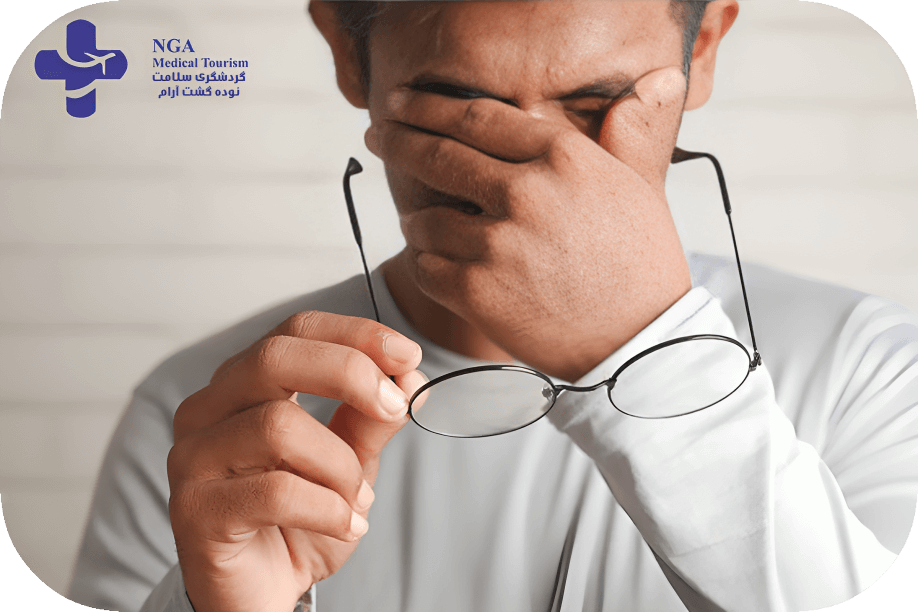

Myopia (nearsightedness): Myopia is a refractive error where distant objects appear blurry while close objects can be seen clearly. It occurs when the eyeball is too long or the cornea’s curvature is too steep, causing light to focus in front of the retina instead of directly on it.
Hyperopia (farsightedness): Hyperopia is a refractive error where distant objects may be seen more clearly than nearby objects. It happens when the eyeball is too short or the cornea’s curvature is too flat, causing light to focus behind the retina rather than on it.
Astigmatism: Astigmatism is a refractive error characterized by distorted or blurry vision at all distances. It occurs when the cornea or lens has an irregular shape, preventing light from focusing evenly on the retina. This results in multiple focal points, causing visual distortion.
Presbyopia: Presbyopia is an age-related condition where the eye’s natural lens loses flexibility, making it challenging to focus on close objects. It typically begins around the age of 40 and is often addressed with reading glasses or multifocal lenses.
LASIK Eye Surgery in Iran
Eye care in Iran includes LASIK eye surgery, a widely performed refractive procedure. Iran has gained recognition for its advanced medical technology and skilled ophthalmologists, making it an attractive destination for LASIK surgery. LASIK, or Laser-Assisted In Situ Keratomileusis, is a precise and effective method for correcting common refractive errors like myopia, hyperopia, and astigmatism. During the procedure, a laser is used to reshape the cornea, allowing light to focus correctly on the retina, thus improving vision. With a strong reputation in the field of eye care, coupled with cost-effective options and state-of-the-art facilities, Iran offers a compelling choice for individuals seeking quality LASIK surgery and comprehensive eye care services.
LASIK EYE SURGERY CANDIDACY
LASIK eye surgery is typically recommended for individuals meeting specific criteria. It is suitable for those with myopia (nearsightedness) having eye prescriptions ranging from 1 to 8, individuals with hyperopia (farsightedness) and eye prescriptions of approximately 6, and those with astigmatism and eye prescriptions around 4. However, it’s important to note that LASIK candidates should be at least 18 years old, have a stable prescription for a certain period, and possess sufficient corneal tissue thickness for the procedure. These factors are carefully considered to ensure the safety and effectiveness of LASIK surgery.
WHAT IS THE BEST AGE FOR LASIK SURGERY?
The optimal time for undergoing LASIK surgery is typically in your 20s and 30s when your eyes are fully developed, and your prescription is stable. Patients under the age of 18 are generally not recommended for this treatment, while those over 60 may be advised to explore alternative options. AriaMedTour specialists advise against postponing the surgery for several reasons. First, as you age, the regenerative capacity of tissues and cells diminishes, potentially reducing the procedure’s effectiveness. Prolonged glasses wear can lead to indentations and dark circles around the eyes. Moreover, individuals averse to wearing glasses often sacrifice their quality of life, and LASIK surgery offers them improved vision and freedom from glasses, making it a compelling choice for enhanced visual comfort and convenience.
In myopia, a common refractive error addressed through eye care in Iran, individuals can see near objects clearly but struggle with distant ones due to the excessive curvature of the cornea or elongation of the eyeball. This abnormality causes the focal point of the lens to form in front of the retina instead of on it. Light is thus concentrated in front of the retina after passing through the cornea and lens. This condition may be exacerbated by excessive eye strain, which the internal lens in myopic individuals cannot adequately compensate for, leading to images forming in front of the retina rather than on it. To correct myopia, flattening the central corneal tissue, often through procedures like LASIK, can effectively refocus light onto the retina and improve distance vision.
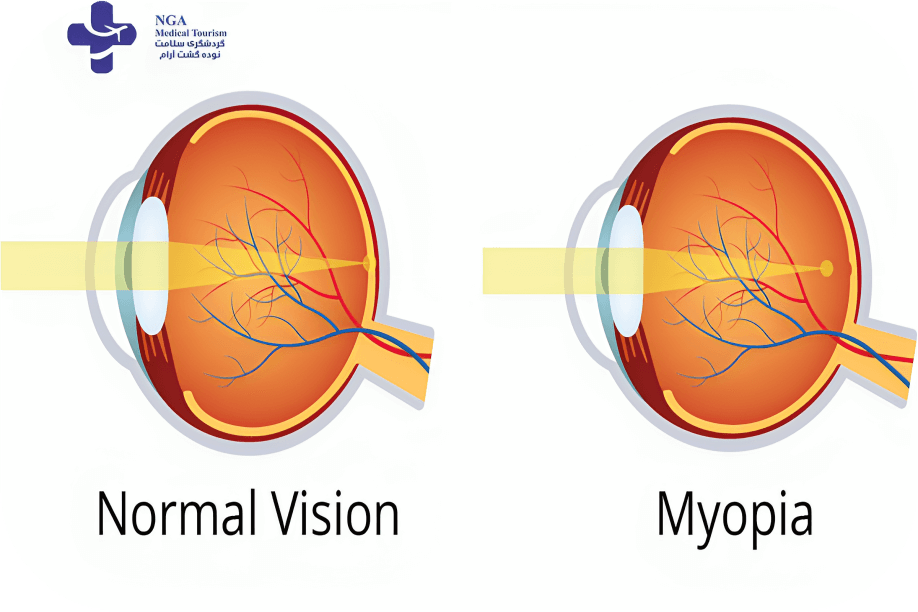

Myopia, commonly known as nearsightedness, is believed to result from a combination of genetic and environmental factors, including prolonged close-up work. It typically develops during childhood and tends to worsen into early adulthood, often exacerbated by environmental stressors. While children born to myopic parents are at a higher risk, not all cases are hereditary, and some individuals may develop myopia despite having non-myopic parents. In such cases, environmental factors, like excessive reading, computer use, or needlework, may contribute to the condition’s progression, highlighting the interplay of genetics and lifestyle factors in myopia development.
Diagnosis of Myopia in Iran:
In Iran, the diagnosis of myopia, or nearsightedness, is typically conducted through a comprehensive eye examination performed by qualified optometrists or ophthalmologists. The process includes a thorough assessment of visual acuity using an eye chart, refraction testing to determine the prescription needed for corrective lenses, and a detailed evaluation of the eye’s health and structure. This diagnosis may also involve measuring the length of the eyeball and assessing the curvature of the cornea. Advanced diagnostic technologies and equipment are often utilized to ensure accurate and precise results. Once diagnosed, individuals can receive appropriate prescriptions for eyeglasses or contact lenses to correct their myopic vision.
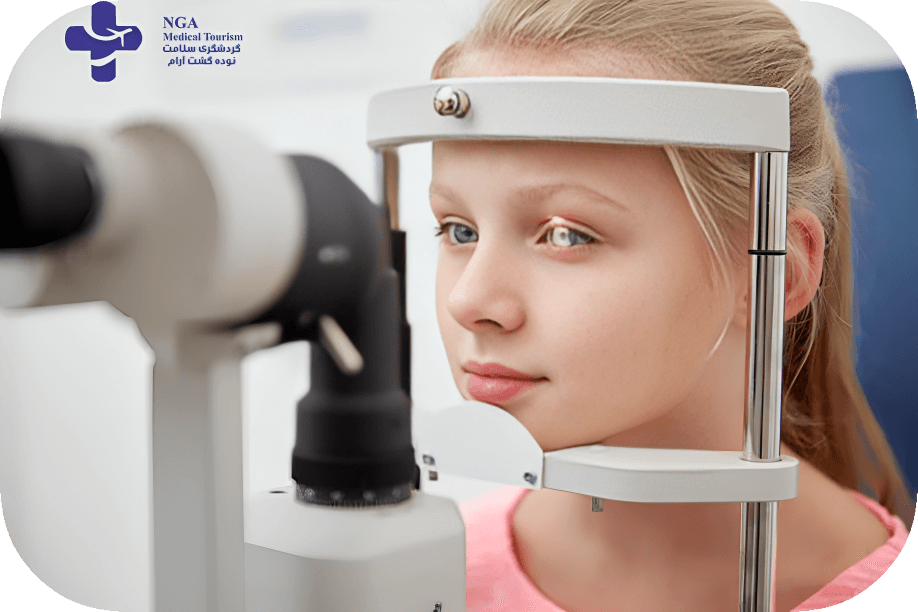

Treatment of myopia of the eye in Iran
Eye care in Iran offers various treatments for myopia (nearsightedness), a common refractive error. Patients diagnosed with myopia in Iran have access to a range of effective treatment options. These include prescription eyeglasses, contact lenses, and refractive surgeries like LASIK (Laser-Assisted In Situ Keratomileusis) to reshape the cornea and improve vision. Iranian medical facilities are equipped with advanced technology and staffed by skilled ophthalmologists, ensuring that individuals with myopia receive high-quality care and personalized treatment plans to address their specific needs and preferences.
Eye emergencies can include sudden vision loss, eye trauma or injury, severe eye pain, and sudden onset of symptoms such as flashing lights, floaters, or redness and swelling of the eye.
Examples of emergency eye care services include:
Foreign object removal: emergency removal of foreign objects from the eye, such as metal or wood chips, glass, or sand.
Treatment of eye infections: emergency treatment of bacterial or viral infections that can cause redness, swelling, and discharge from the eye.
Treatment of corneal abrasions: emergency treatment of scratches or cuts on the cornea, the clear outer layer of the eye.
Treatment of chemical burns: emergency treatment for chemical burns caused by exposure to acids, alkalis, or other hazardous chemicals.
Treatment of eye injuries: emergency treatment for eye injuries, such as blunt trauma, cuts, or puncture wounds.
Treatment of acute glaucoma: emergency treatment for sudden onset of severe eye pain, redness, and vision loss caused by acute glaucoma.
Retinal detachment: emergency treatment to reattach the retina, the light-sensitive tissue at the back of the eye, which can become detached due to injury or other causes.
Emergency eye care is typically provided by ophthalmologists or emergency medical personnel, who are trained to diagnose and treat a wide range of eye emergencies and injuries. If you experience sudden eye symptoms or have an eye injury, it is important to seek emergency eye care immediately to prevent permanent vision loss or other complications.
Due to the high variety of eye-related diseases and the different treatment tariffs for each disease, please call the following numbers to know the prices and receive a free consultation: +989120131750 – +9891201317501 – +989129369336
The world health team of Nodeh Gasht Aram, with the best treatment packages and the best and capable Iranian specialists, can help you improve your illness and make your life easier.
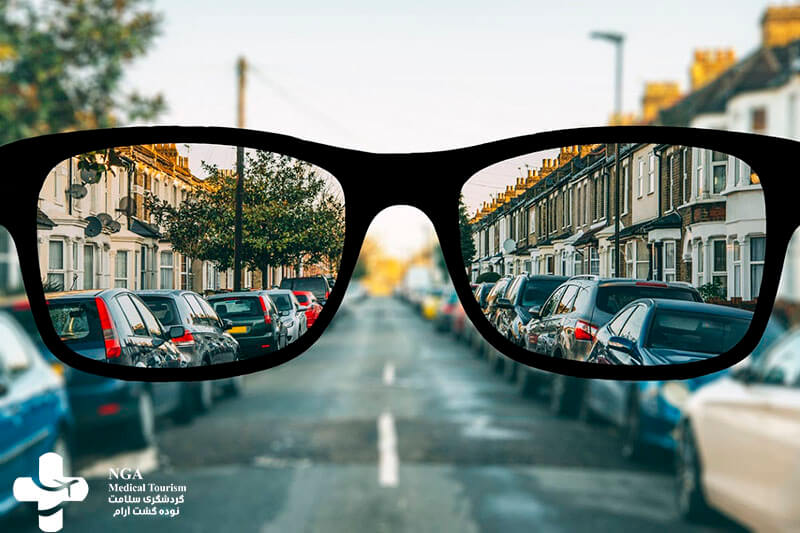
In Iran, eye care is an important aspect of overall health and wellness, as vision plays a crucial role in daily life. Regular eye exams are essential for maintaining good eye health and preventing eye problems, such as refractive errors, eye diseases, and vision loss. Comprehensive eye care services, including routine eye exams, treatment of eye diseases and conditions, emergency eye care, and refractive surgery, are available from qualified optometrists and ophthalmologists in Iran. These services can help correct vision problems, prevent or manage eye diseases, and ensure that patients receive appropriate care for their individual needs. Individuals in Iran can also take steps to promote good eye health, such as wearing protective eyewear during sports and other activities, taking breaks during prolonged use of electronic devices, and maintaining a healthy lifestyle that includes a balanced diet and regular exercise.
Read More: IVF in Iran
Read More: What Is Ivf Procedure
Read More: Where Is The Cheapest Country For IVF In 2023?
Read More: Ivf Injections
To take care of your eyes, schedule regular eye exams, wear protective eyewear, take breaks during prolonged computer use, eat a healthy diet, quit smoking, manage chronic health conditions, and protect your eyes from the sun.
To protect your eyes daily, wear sunglasses with UV protection, practice good hygiene, take regular breaks, use proper lighting, and keep your device screen clean and at a safe distance.
It is not possible to restore 20/20 vision naturally once it has been lost. However, maintaining a healthy lifestyle, including a balanced diet and regular exercise, can help prevent or slow the progression of certain eye diseases and vision problems. Additionally, practicing good eye hygiene, such as taking regular breaks during prolonged computer use and protecting your eyes from the sun, can help maintain good eye health.
Eye care refers to the range of services and practices that are focused on maintaining good eye health and preventing or managing eye problems and diseases. This includes routine eye exams, treatment of eye diseases and conditions, emergency eye care, and refractive surgery to correct vision problems. Eye care is important for maintaining good vision and overall health and well-being.
We need good eye care to maintain good vision, prevent or manage eye diseases and conditions, and reduce the risk of eye injury. Regular eye exams and good eye care practices can help detect vision problems early and preserve eye health.
Eye care is important to maintain good vision and overall eye health, prevent and manage eye diseases and conditions, and reduce the risk of eye injury. Regular eye exams and good eye care practices can help detect and treat vision problems early and preserve eye health.
We can have eye problems due to various factors, including genetics, aging, injury, disease, and lifestyle factors such as poor diet and lack of exercise. Eye problems can range from refractive errors like myopia and hyperopia to more serious conditions like glaucoma and macular degeneration.
To prevent eye problems, schedule regular eye exams, protect your eyes from the sun, practice good eye hygiene, eat a healthy diet, maintain a healthy lifestyle, take breaks during prolonged computer use, and wear protective eyewear when needed.
Foods that are good for eye health include leafy green vegetables, fatty fish, citrus fruits, nuts and seeds, and carrots. These foods are rich in antioxidants, omega-3 fatty acids, vitamin C, and vitamin E, which can help protect the eyes from damage and reduce the risk of age-related eye diseases.
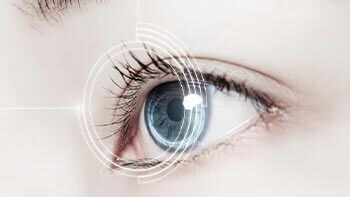
LASIK eye surgery is a popular and effective procedure for correcting refractive errors. With precise laser technology, it reshapes the cornea, providing improved vision without the …

PRK (Photorefractive Keratectomy) is a transformative eye surgery that corrects refractive errors such as myopia, hyperopia, and astigmatism. Through a precise laser procedure, the …
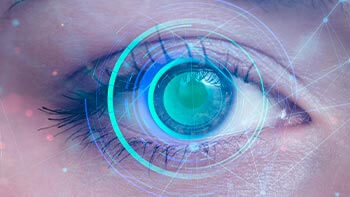
Intraocular Lens (IOL) is a small artificial lens implanted in the eye to replace the natural lens that has been affected by cataracts or other vision conditions. It is a…
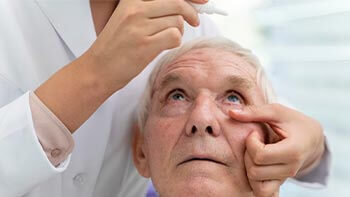
Cataract surgery is a safe and effective procedure that involves removing the cloudy lens of the eye and replacing it with a clear artificial lens, resulting in improved vision and quality of life for patients.
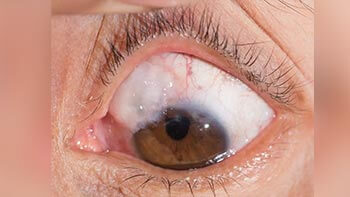
Glaucoma surgery is a procedure aimed at reducing intraocular pressure in the eyes, preventing further damage to the optic nerve and preserving vision. There are different types of glaucoma surgeries available…

Corneal transplant surgery, also known as keratoplasty, is a procedure that involves replacing a damaged or diseased cornea with a healthy one from a donor. This surgery can restore vision, reduce pain…
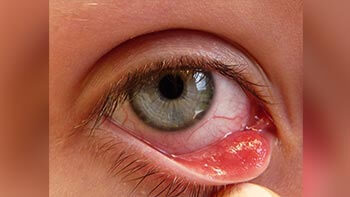
Chalazion treatment typically involves warm compresses, gentle massage, and prescription medications such as antibiotics or steroid injections. In some cases, surgical removal …
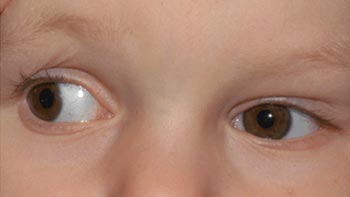
Strabismus surgery is a procedure to correct misaligned eyes. This surgery involves adjusting the muscles that control eye movement, improving eye alignment and reducing double vision. Strabismus surgery is …
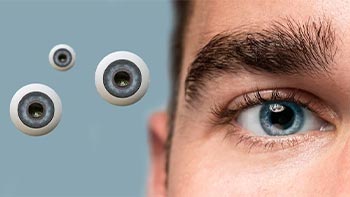
Prosthetic eyes, also known as ocular prostheses, are custom-made artificial eyes used to replace a missing or damaged eye. These prosthetic eyes are typically made of acrylic and are designed to match the size, shape, and color of the natural eye. Prosthetic eyes can improve the appearance of the eye socket and can also help restore confidence and self-esteem in individuals who have lost an eye due to injury or disease.

Blepharoplasty is a cosmetic surgical procedure that involves removing excess skin, fat, and muscle from the eyelids to improve their appearance. This surgery can address sagging or drooping eyelids, wrinkles, and bags under the eyes, giving the eyes a more youthful and refreshed appearance. Blepharoplasty is typically performed on an outpatient basis and has a relatively short recovery time.
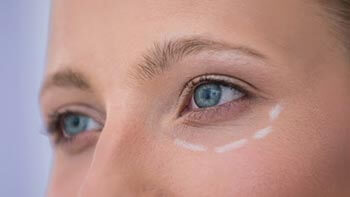
Oculoplastic surgery is a specialized field of surgery that focuses on the structures around the eye, including the eyelids, tear ducts, and orbit. This type of surgery can address a variety of conditions, including eyelid drooping, tearing, and tumors. Oculoplastic surgery can improve both the function and appearance of the eye area and is typically performed on…
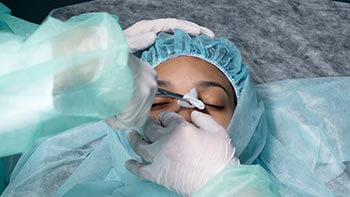
Retinal detachment surgery is a procedure that involves reattaching the retina to the back of the eye. This surgery is typically performed to prevent permanent vision loss and involves using small instruments to place a gas bubble or silicone oil in the eye to help hold the retina in place. Retinal detachment surgery is often done on an outpatient basis and has a high success rate in restoring vision …



